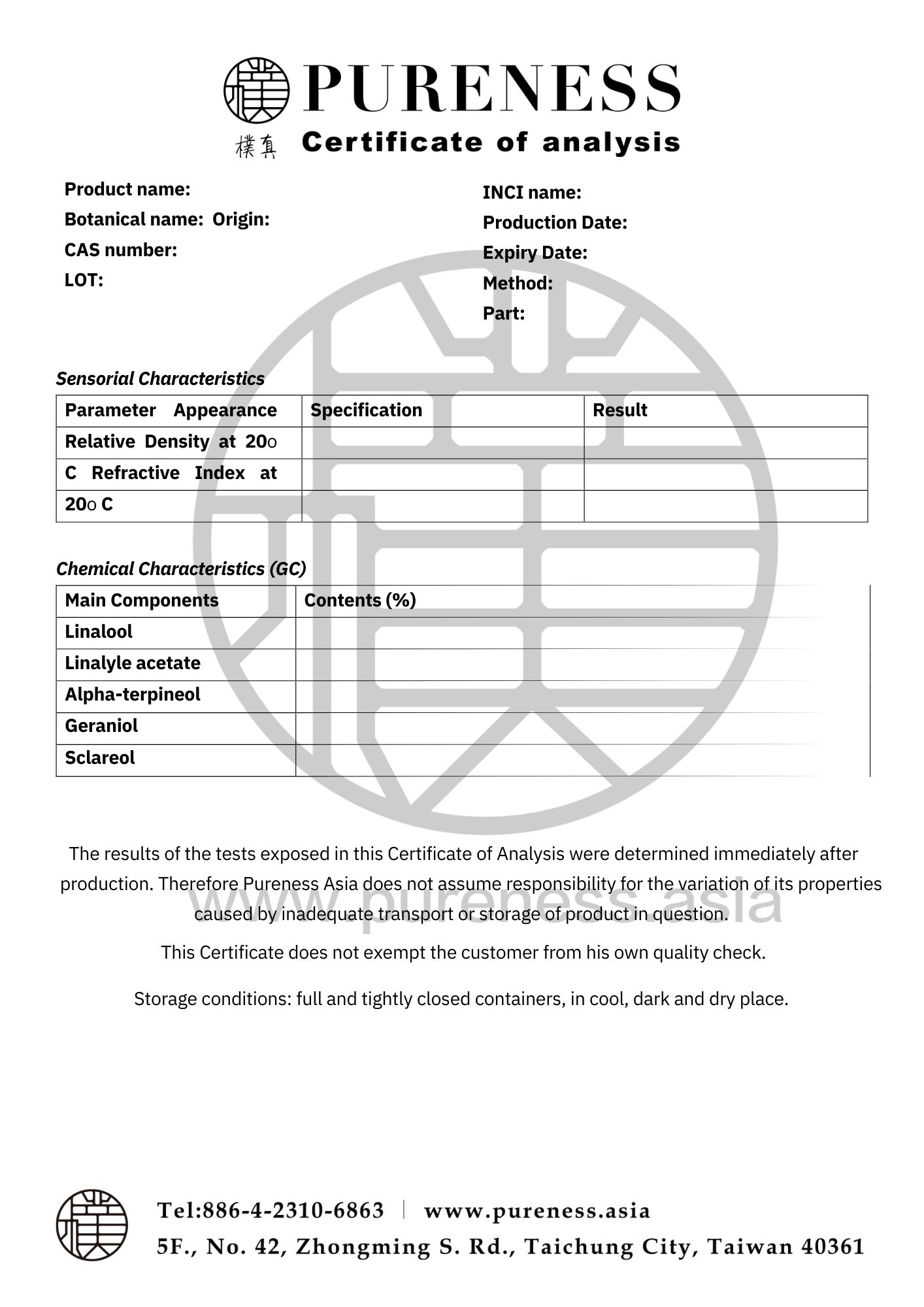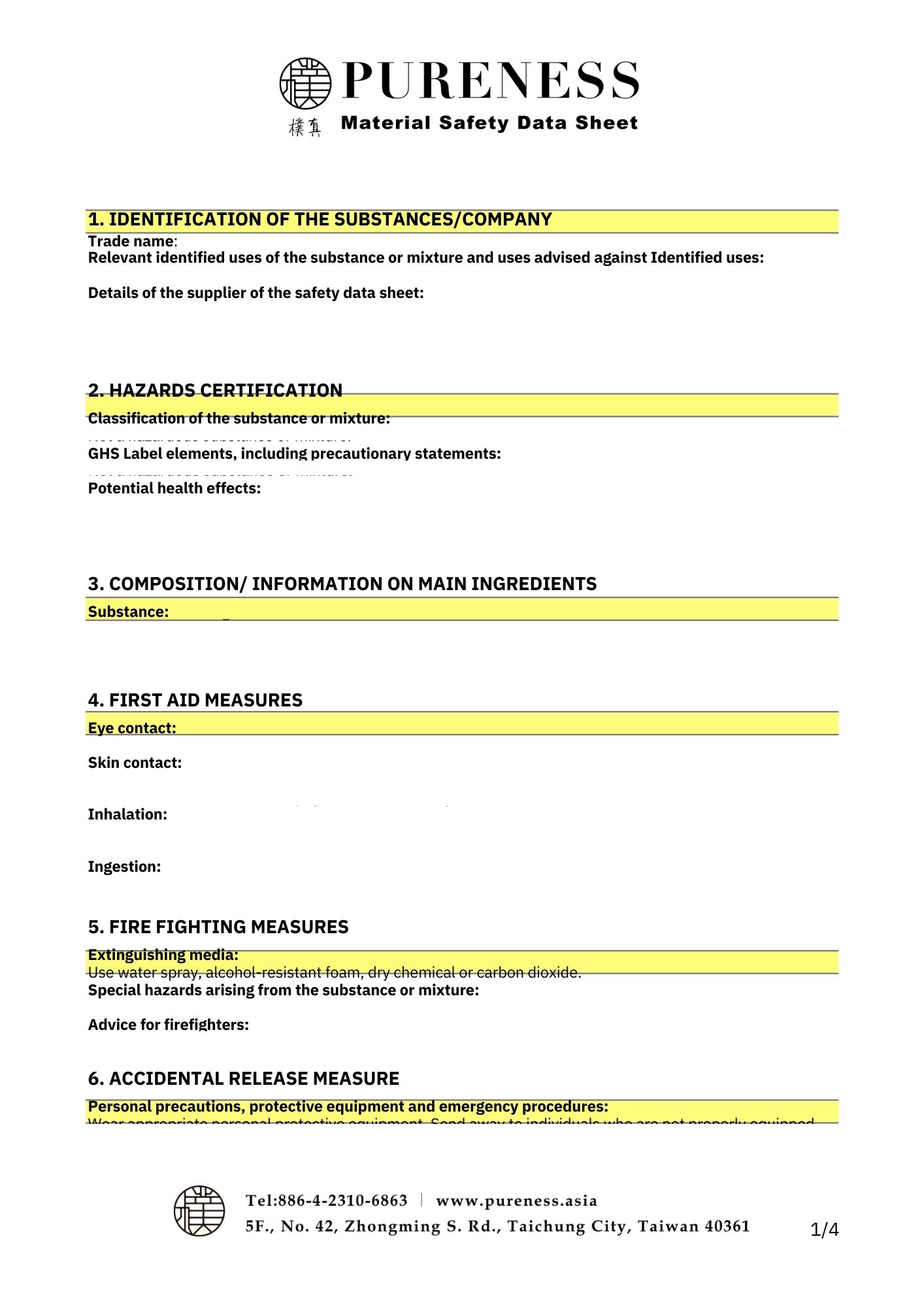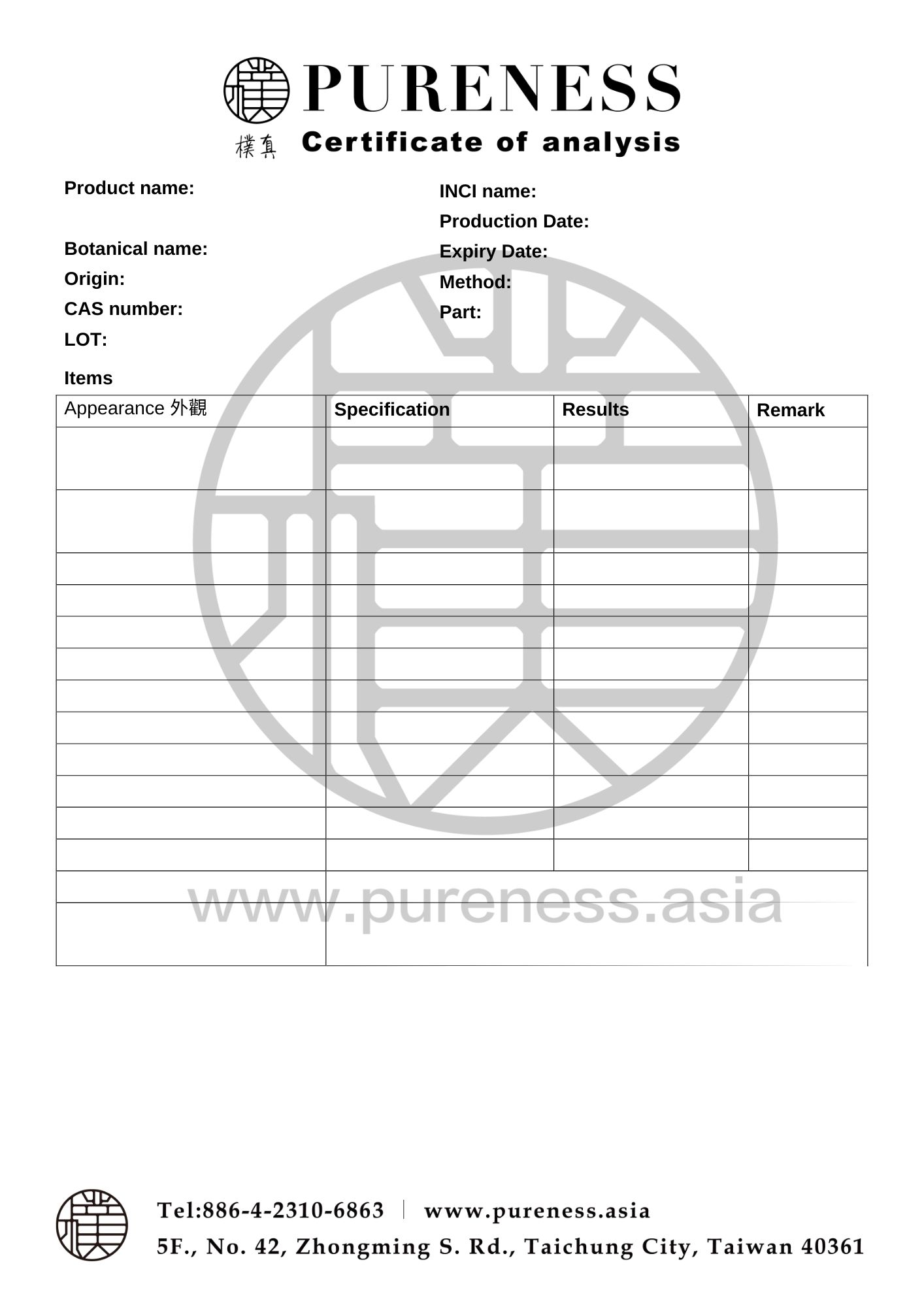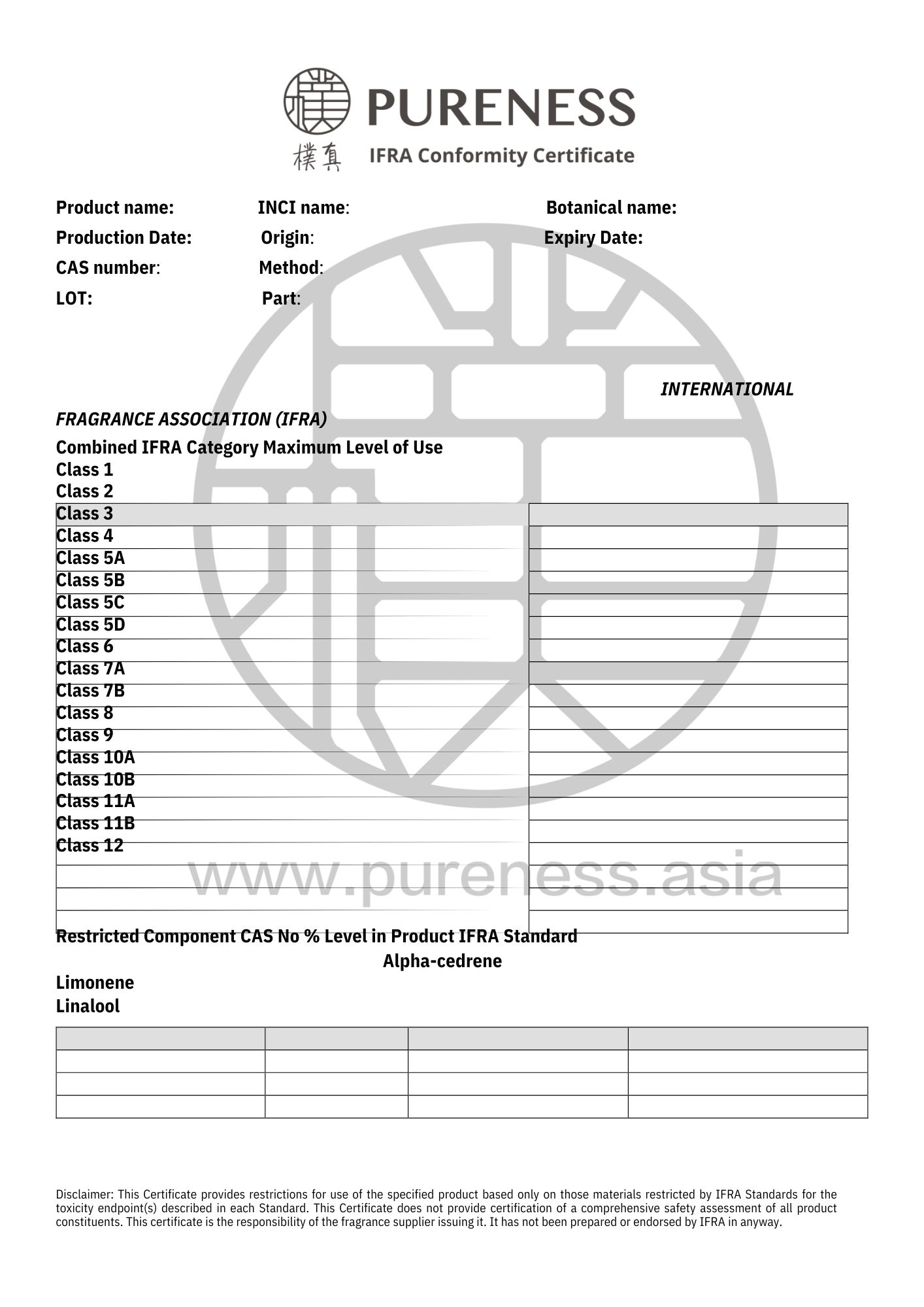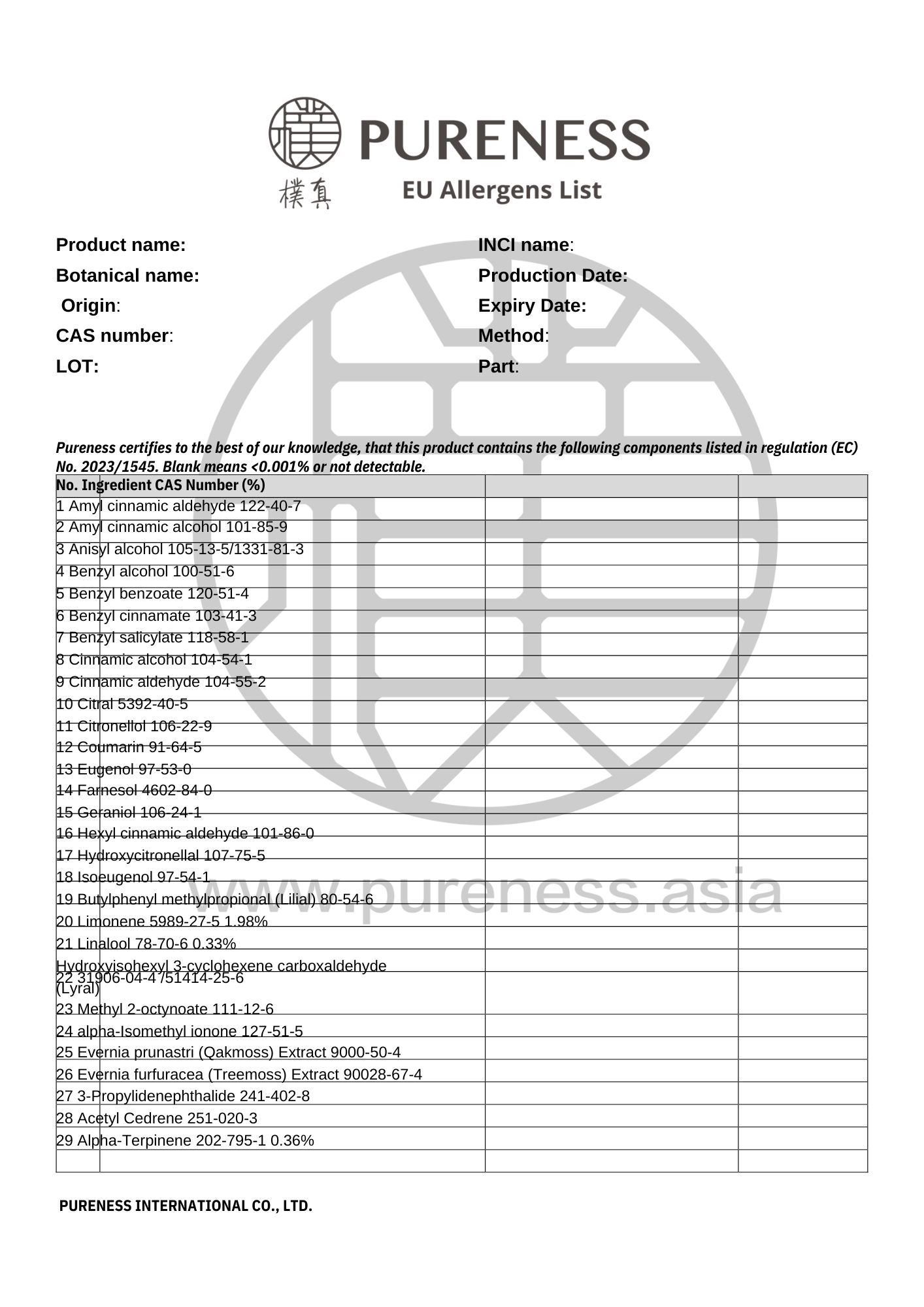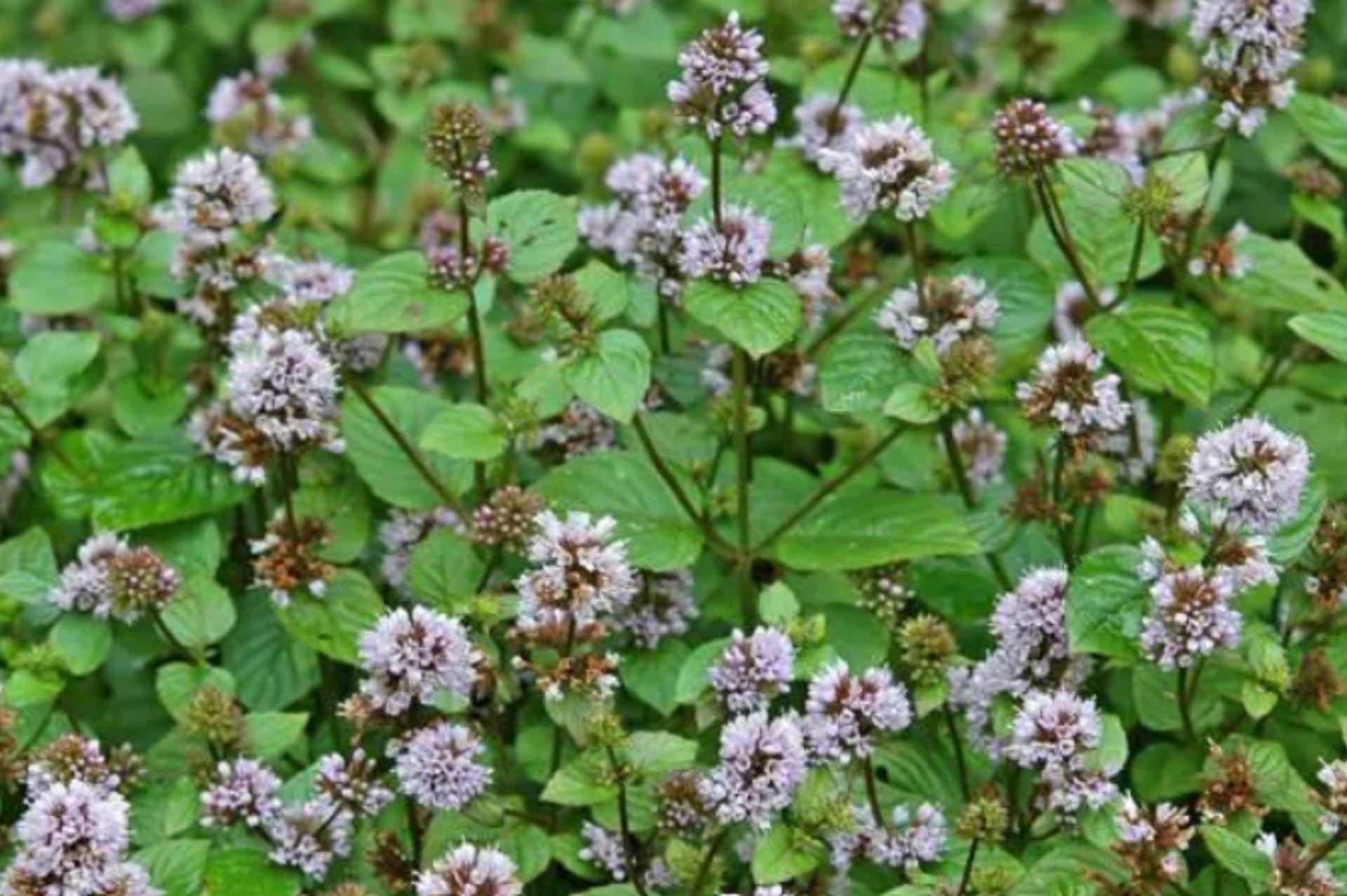
Lemonmint
Scientific name|Mentha citrata
Origin|India
Classification|Herb series
Specifications|500g-25kg Please contact sales for details
Extraction part|Leaves
Extraction method | Distillation
Plant family|Lamiaceae
Aroma|Fruity scent of citrus and lemon
▎Essential Oil Introduction
Mint is a commonly used culinary and medicinal herb, with many different species belonging to the Mentha genus. This includes varieties frequently used in aromatherapy, such as peppermint (Mentha piperita), spearmint (Mentha spicata), and lemon mint (Mentha citrata).
When it comes to the hybridization of mint, there are currently at least 15 to 30 confusing varieties, each with a wide range of characteristics and applications. When two plants of the same species crossbreed, a hybrid is created, which can occur naturally in the wild or be cultivated by humans. The appearance of a "×" between the genus and species name in a plant's Latin botanical name indicates a hybrid plant. Additionally, there are cultivars, which are variant strains initially created through natural or artificial selection but are then specially cultivated to preserve their unique traits, such as lemon mint (Mentha ×piperita 'Citrata').
Lemon mint produces small purple flowers and emits a pleasant citrus aroma. Gently rubbing its leaves releases a minty scent. The primary chemical component is linalyl acetate, which is structurally similar to true lavender, earning it the nickname "the true lavender of the mint world."
In Germany, lemon mint is also known as bergamot mint, according to its botanical name. It was once widely believed to be a hybrid of water mint (Mentha aquatica L.) and spearmint (Mentha spicata L.), but more recent research suggests it is a selected and propagated variety of water mint.
The plant has bright green, ovate leaves that are opposite and cross-paired, with smooth surfaces and slightly blunt serrated edges, making the leaves feel soft to the touch. Known as the "fruity mint," it is used as a flavoring in the French liqueur Chartreuse and is often found as a garnish in cocktails or salads.
▎Component Analysis
|Main component: Esters
The components include linalyl acetate, (R)(-)-linalool, along with other compounds such as geranyl acetate, menthol, neryl acetate, β-myrcene, and limonene.
|Research Validation
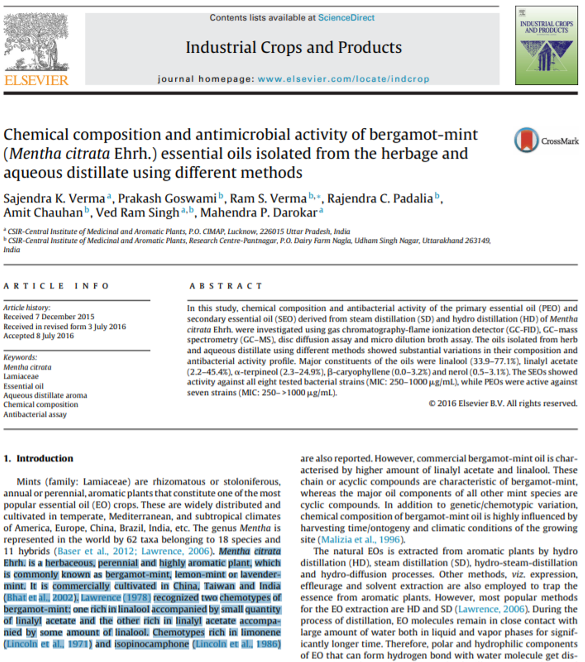
▸ Extracting the chemical components of lemon mint using different distillation methods.。
|Raw Material Certifications
To obtain relevant certification information, please contact us on WhatsApp.
▎References
- Chemical composition and antimicrobial activity of bergamot-mint (Mentha citrata Ehrh.) essential oils isolated from the herbage and aqueous distillate using different methods. November 2016. Industrial Crops and Products 91602- Products Industrial 16.
- Anastasia L Crowell , David C Williams, Edward M Davis, Mark R Wildung, Rodney Croteau. Molecular cloning and characterization of a new linalool synthase. Arch Biochem Biophys. 2002 Sep 1;405(1):112-21.
- Torres-Martínez Y, Arredondo-Espinoza E, Puente C, González-Santiago O, Pineda-Aguilar N, Balderas-Rentería I, López I, Ramírez-Cabrera MA. Synthesis of silver nanoparticles. its anticancer and cytotoxic activity. PeerJ. 2019 Dec 9;7:e8142.
- Kumar P, Mishra S, Malik A, Satya S.Repellent, larvicidal and pupicidal properties of essential oils and their formulations against the housefly, Musca domestica. Med Vet Entomol. 2011 Sep;25(3):302-10.
- Gessner R, Rösch P, Petry R, Schmitt M, Strehle MA, Kiefer W, Popp J. The application of a SERS fiber probe for the investigation of sensitive biological samples. Analyst. 2004 Dec;129(12):11933(12- 9.
- Khair KU, Farid M, Ashraf U, Zubair M, Rizwan M, Farid S, Ishaq HK, Iftikhar U, Ali S. Citric acid enhanced phytoextraction of nickel (Ni) and alleviate Mentha piperita (L.) from Niinduced physiological and biochemical damages. Environ Sci Pollut Res Int. 2020 Jul;27(21):27010-27022.
- Fang C, Chen G, Kan J.Comparison on characterization and biological activities of Mentha haplocalyx polysaccharides at different solvent extractions. Int J Biol Macromol. 2020 Jul 1;154:916-928.
- pinene synthase. Arch Biochem Biophys. 2001 Aug 1;392(1):123-36.
- Chanotiya CS, Yadav A. Enantiomeric composition of (3R)-(-)- and (3S)-(+)-linalool in various essential oils of Indian origin by enantioselective capillary gas chromatography-flame ionization and mass spectroilective capillary gas chromatography-flame ionization and mass spectrorys. Nat Prod Commun. 2009 Apr;4(4):563-6.
- Dyer J, Cleary L, Ragsdale-Lowe M, McNeill S, Osland C. The use of aromasticks at a cancer centre: a retrospective audit. Complement Ther Clin Pract. 2014 Nov;20(4):203-6.
|Some images sourced from the internet. Contact for copyright removal|
